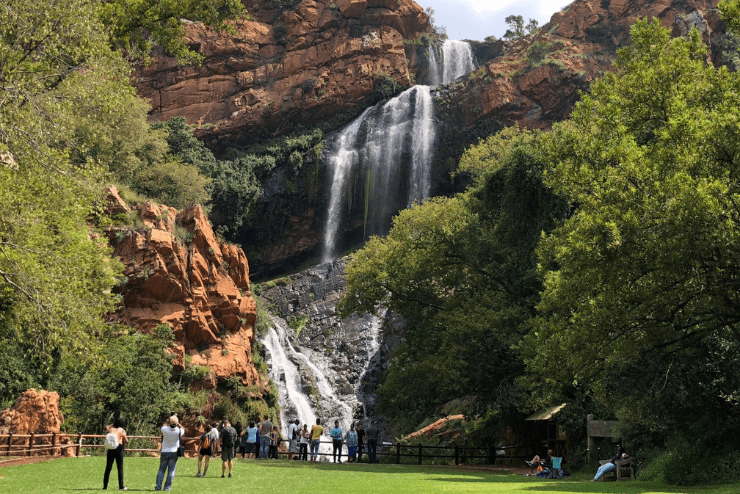Some Of Johannesburg North Attractions
Rumored Buzz on Johannesburg North Attractions
Table of Contents4 Easy Facts About Johannesburg North Attractions ExplainedSome Ideas on Johannesburg North Attractions You Should Know8 Easy Facts About Johannesburg North Attractions ExplainedGetting My Johannesburg North Attractions To WorkThe Single Strategy To Use For Johannesburg North AttractionsThe Johannesburg North Attractions PDFs
The city owes its place to the presence of a a lot more priceless source: gold. The city grew on the edge of the Witwatersrand Key Coral reef, a below ground stratum of gold-bearing quartz-silica empire that arcs for numerous miles underneath the Highveld. A lot of the gold mines in the city stopped procedure in the 1970s, however in its day the Witwatersrand gold sector made up greater than 40 percent of the world's annual gold production.Johannesburg has a warm environment. Summer season temperature levels balance concerning 75 F (24 C); winter months temperatures average about 55 F (13 C) and only sometimes dip below freezing. The city appreciates concerning eight hours of sunlight per day in both winter and summer season. Rain averages about 28 inches (700 millimetres) per year, yet the overall varies considerably from year to year.
What rain the city obtains falls practically specifically in the summertime months, often in spectacular late-afternoon electric storms., where lots of citizens still rely on coal for fuel.

The Facts About Johannesburg North Attractions Uncovered
The balance of the city is inhabited by whites. Accommodation differs in personality and top quality. Soweto is well-known for its countless rows of municipally constructed, two-room matchbox homes, yet it likewise has a few flourishing enclaves in addition to bristling squatter camps, where tens of thousands live without water, electrical power, or hygiene facilities.
Physical growth, although rather restricted by transportation, continued rapidly as migration to South Africa, and Johannesburg particularly, raised dramatically. This issue was fixed in the 1930s when the car was presented in you can look here mass manufacturing to South Africa. Vehicles were, generally, restricted to the well-off, and permitted them to transfer to the north of the city and commute into the centre.
The majority of poor suburban areas were blended, with bad blacks and whites living with each other, although the affluent suburban areas were generally booked for whites.
The approximated population of the area is 200,000, [] The number of people living in the internal city on a casual basis is unidentified, as several are prohibited immigrants. A lot of higher-income citizens and white people have actually transferred to the northern suburban areas and have been replaced by lower-income black individuals. The unemployment, education, and age accounts of the location are all unknown, as a result of the trouble of acquiring trusted details regarding the area.
The Single Strategy To Use For Johannesburg North Attractions
Yeoville and Bellevue have a mix of apartment and single household systems on little great deals. The area lies on a hilly divide that runs from east to west. The most obvious geographic attribute is Observatory Ridge, which is called for the huge observatory situated Get More Information on it. The leisure areas are no more used, because of safety problems.

The Buzz on Johannesburg North Attractions
R. Tambo International Airport). The eastern residential areas are some of the oldest areas of Johannesburg, there are huge areas of Jewish and other European backgrounds, the bulk of the populace is English speaking. There are three golf training courses as well as a variety of secured ridges with viewsites. There are several well-developed and up-market home entertainment and buying areas in the east such as the Eastgate Mall and the Greenstone mall.
Originally built to house male migrant employees, numerous have actually been improved as dwellings for pairs and households. The residential area was not historically enabled to create work centres within the area, so almost all of its citizens are commuters to other components of the city.
Rumored Buzz on Johannesburg North Attractions
The domestic areas in the north suburbs are primarily formal, with no substantial areas of informal housing, or real estate that does not have an irreversible structure. This is a well established location, there is a trend of land use change from residential to business, particularly along major arterial roads and around established nodes.
Roadways to the eastern and west are much less well developed, as there are no freeways taking a trip in that instructions. In the direction of the northern border of the city, the thickness of development decreases, leaving big locations of primitive land around Midrand.
What Does Johannesburg North Attractions Do?
The initial read this suburban area to the north of the central city is Parktown, which is located on a hillside forgeting the central city and Hillbrow. It has numerous affluent residents and Edwardian-style estates, in addition to the Education and learning and Clinical universities of the University of the Witwatersrand. The big concrete Charlotte Maxeke Johannesburg Academic Healthcare Facility controls the skyline of Parktown.